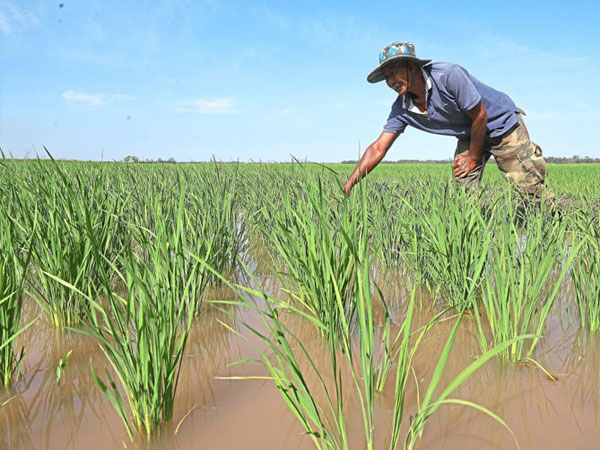 The central government will release 210,000 tons of rice from its emergency reserves to curb soaring rice prices, farm minister Taku Eto announced at a news conference on Feb. 14.
The central government will release 210,000 tons of rice from its emergency reserves to curb soaring rice prices, farm minister Taku Eto announced at a news conference on Feb. 14.
The amount of rice released will be equivalent to about 3.2 billion bowls of rice.
The plan is to release 150,000 tons first, with the remainder added as the distribution conditions warrant, Eto said.
Bidding for the stockpiled rice is expected to begin in early March, which should be on retailers’ shelves by the end of the month.
“We want to do everything we can to stop the stagnation of distribution,” Eto said.
Although the 2024 rice harvest is expected to be 180,000 tons more than in the previous year, the amount of rice that agricultural cooperatives and other major rice collectors could secure by the end of 2024 was 210,000 tons less than in the previous year.
The agriculture ministry considers this 210,000-ton gap to be a problem, as it indicates a block in distribution, and decided to tap into the emergency reserves to make up the difference.
If the release of 210,000 tons fails to fix the distribution blockage, the ministry will consider releasing additional rice stockpiles later.
The stockpiled rice will be sold to major rice traders who purchase more than 5,000 tons of “genmai” brown rice each year.
The ministry will select the traders through a bidding process and plans to buy back the same amount of rice from those traders within one year to prevent an excessive decline in rice prices.
Masayuki Ogawa, assistant professor of agricultural economics at Utsunomiya University, said that the 210,000 tons is a very impactful figure and that the rice prices will come down immediately.
“This time, there is no shortage of rice as a whole, but rather the presence of vendors who are reluctant to sell,” Ogawa said. “If today's announcement causes such vendors to give up their rice, we can expect to see a downward trend in rice prices before the day is over.”
Until now, the ministry policy has only allowed rice from the emergency reserves to be released in times of poor harvests or natural disasters.
Rice prices surged last summer after an advisory warning of a potential Nankai Trough megaquake triggered panic buying among the public.
Even then, the ministry did not change its policy and refused to release any stockpiled rice.
The ministry stated that rice prices would stabilize once new rice harvested that year became available.
However, as rice prices continued to soar, the ministry has changed its stance.
At the end of January this year, a new system was established, adding “cases where smooth distribution is hindered” to the list of circumstances under which stockpiled rice may be released.
This time, the ministry decided to immediately put this system into effect.














© Copyright 2025 The SSResource Media.
All rights reserved.